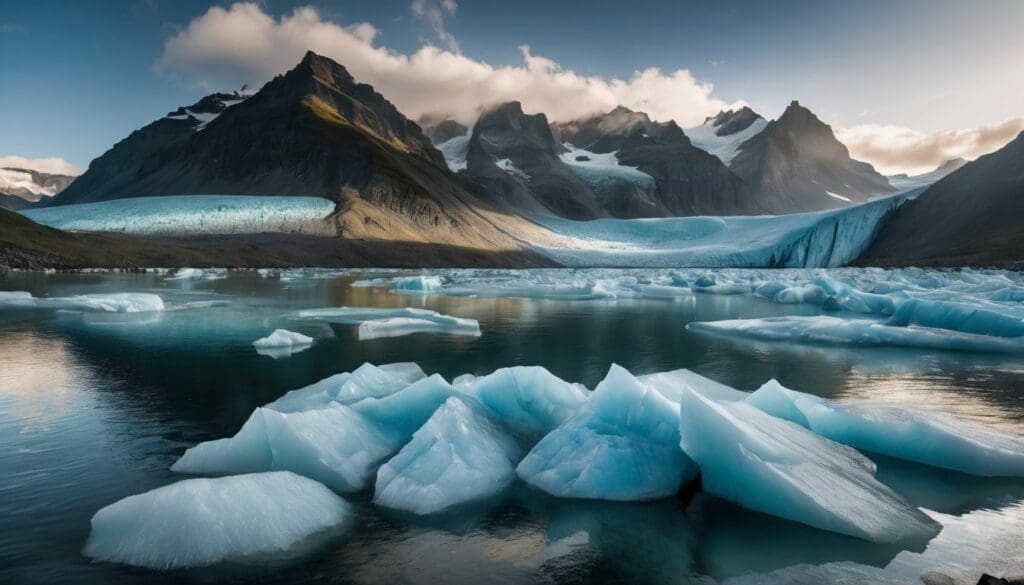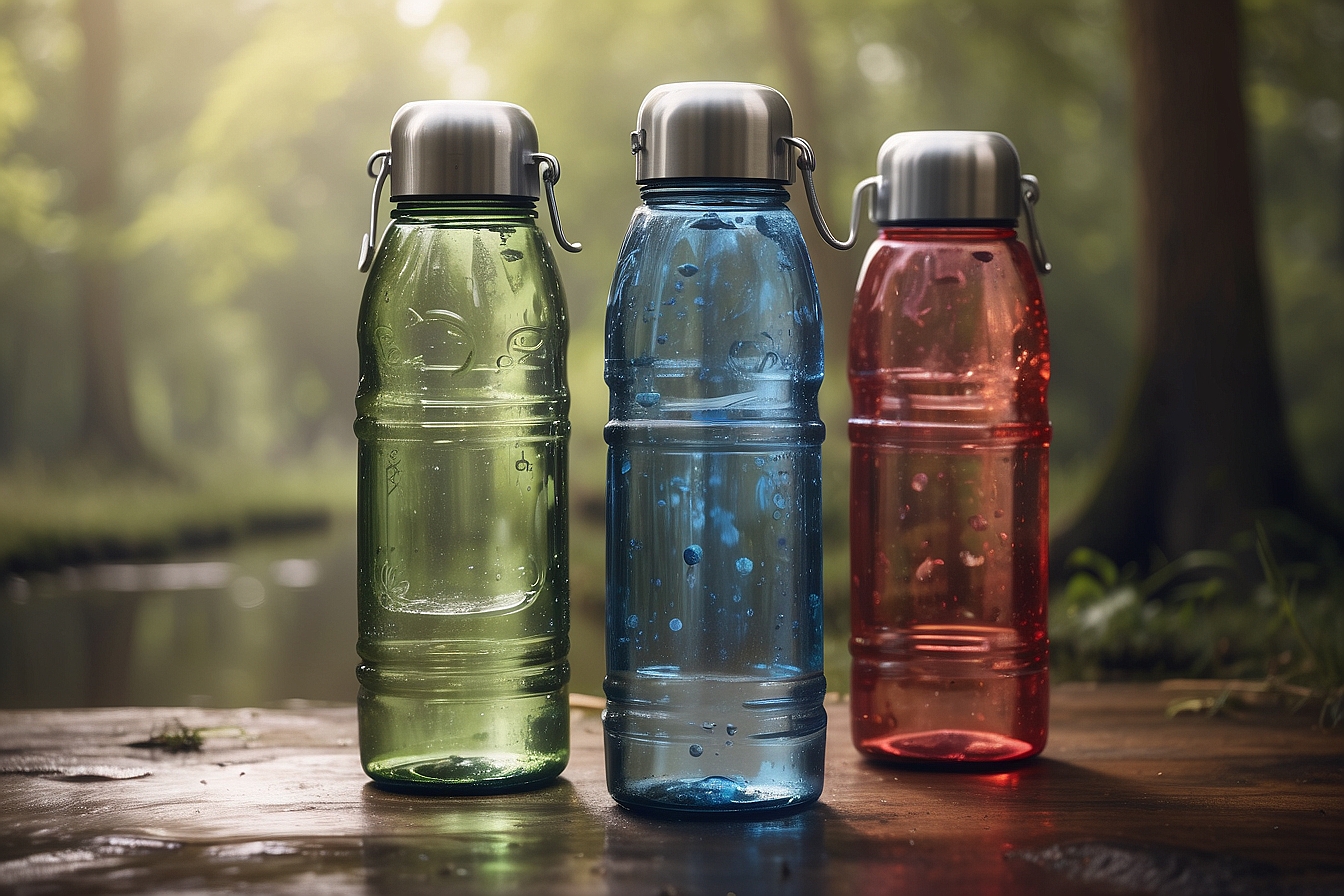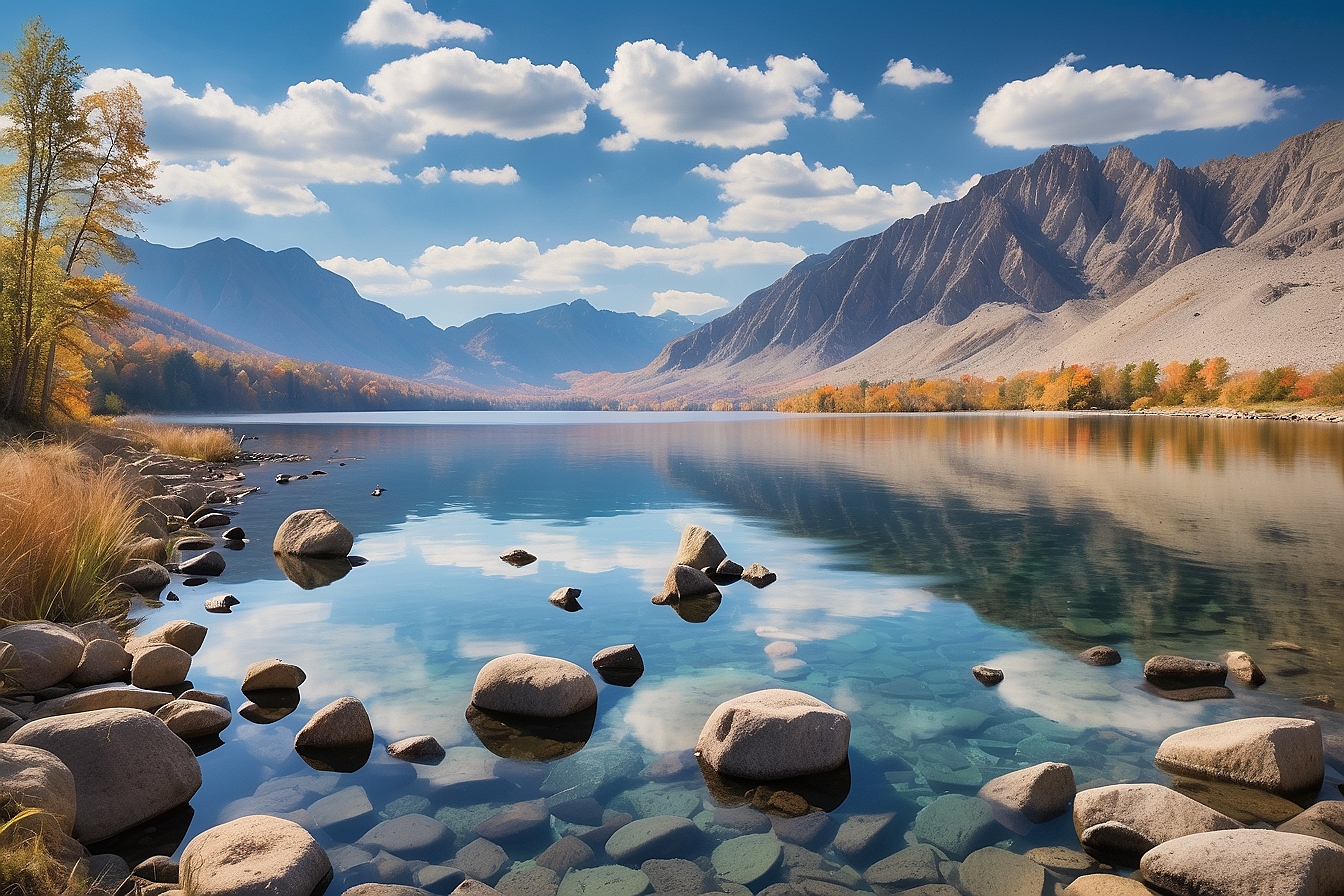As we sit down to watch the evening news, it’s increasingly difficult not to feel concerned about the state of our beloved planet. Like so many of us, you’ve no doubt seen those heart-wrenching images of disappearing ice caps and understand the urge to find out more—were you aware that in just two decades, glaciers have accounted for a staggering 21% of sea level rise? In our latest piece, we delve into the profound impact melting glaciers have on every corner of our world and explore meaningful steps we can take together.
Do join us on this journey; after all, it concerns each and every one of us.
Key Takeaways
- Glaciers are rapidly melting, showing a 21% contribution to the rise in sea levels over the past two decades, with coastal areas facing increased threats from ocean encroachment.
- The accelerating glacier melt is due to higher global temperatures and has serious consequences including coastal erosion, displacement of communities, alterations in weather patterns, and loss of habitats for wildlife.
- Action must be taken urgently to address climate change by reducing carbon emissions through renewable energy sources and promoting sustainable practices like recycling and conservation efforts.
The Connection between Melting Glaciers and Rising Sea Levels
Glaciers have been melting at an alarming rate, contributing to 21% of sea level rise in the past two decades. This acceleration of glacier melt is directly impacting global sea levels and coastal areas around the world.
Study shows glaciers account for 21% of sea level rise in past two decades
We can’t ignore the chilling reality recent research has uncovered: our planet’s glaciers have significantly contributed to rising sea levels, making up a staggering 21% of the increase over the last twenty years.
Melting ice caps and glacial retreat are reshaping our world in profound ways, with meltwater from these icy giants adding vast amounts of water to our oceans.
Our coastal cities are feeling the effects, facing escalating threats from ocean encroachment due to melting glaciers. As global temperatures continue to climb, this trend is not just alarming — it’s accelerating.
We witness firsthand how polar ice caps and land-based glaciers release torrents of fresh water into the seas, disturbing marine ecosystems and potentially altering weather patterns far beyond their immediate surroundings.
The time for us all to act against climate change has never been more critical as we stand on this precipice witnessing glacier melt’s undeniable impact on rising sea levels.
Impact of glacier melt on global sea levels
With glaciers contributing significantly to rising sea levels, the impact of glacier melt on global sea levels cannot be overstated. As glaciers continue to melt at an accelerated pace, they are making substantial contributions to the elevated sea levels we are witnessing today.
This rapid glacier melt is due in part to increasing global temperatures and can lead to coastal erosion and the potential displacement of coastal communities, as well as habitat loss for wildlife.
Moreover, the melting glaciers also affect weather patterns and contribute to changes in ocean temperature, which can further exacerbate coastal flooding. Understanding the far-reaching consequences of melting glaciers on global sea levels is crucial for creating effective strategies aimed at mitigating climate change and reducing carbon emissions.
Acceleration of glacier melt in recent years
Glacier melt has accelerated drastically in recent years, contributing significantly to rising sea levels. This is evident from the rapid retreat of glaciers and ice sheets due to global warming.
The increase in temperature has led to a substantial loss of ice mass, with some areas experiencing unprecedented melting rates. These alarming trends highlight the urgent need for proactive measures to address climate change and mitigate its impact on glacier melt and subsequent sea level rise.
The acceleration of glacier melt in recent years underscores the pressing need for immediate action to curb global warming. As environmentally conscious individuals, we have a crucial role in advocating for sustainable practices and supporting initiatives aimed at reducing carbon emissions.
Understanding Glaciers and Ice Sheets
Glaciers and ice sheets play a crucial role in regulating global sea levels. Their meltwater contributes significantly to sea level rise, especially in a warming climate. Understanding these icy giants is essential for comprehending the impact of their melting on our planet.
Differences between glaciers and ice sheets
Glaciers are large bodies of ice that form on land, usually in mountainous regions, and can move slowly down valleys under the pressure of their own weight. In contrast, ice sheets are massive expanses of glacier ice that cover more than 50,000 square kilometres.
They typically bury everything beneath them and are found only in Greenland and Antarctica. The key distinction is that glaciers are smaller and more localised compared to the expansive coverage of ice sheets.
While glaciers generally retreat due to melting and sublimation at their lower edges during warm periods, ice sheets have a constant flow outward from their centres where snow accumulates faster than it melts.
Importance of glaciers in a warming climate
Understanding the importance of glaciers in a warming climate is crucial for comprehending their impact on rising sea levels. These vast bodies of ice act as reservoirs, storing freshwater and releasing it slowly over time.
Glaciers play a vital role in regulating water flow in rivers and providing a source of freshwater for ecosystems, agriculture, and human consumption. Moreover, they serve as indicators of climate change, with their melt patterns reflecting global temperature shifts.
Monitoring glacier behaviour helps scientists gauge the rate and scale of environmental transformation due to rising temperatures and changing weather patterns.
As glaciers continue to melt at an accelerating pace, it’s essential to recognise their significance not only as natural marvels but also as key players in sustaining ecological balance and supporting life on Earth.
Effects of Melting Glaciers on Sea Level Rise
As glaciers continue to melt, the rise in sea levels can lead to coastal erosion and elevated sea levels, posing significant threats to coastal communities and wildlife habitats. It’s important to understand the impact of melting glaciers on our environment and take action to address this pressing issue.
Coastal erosion
Coastal erosion can dramatically impact shorelines, landscapes, and communities. As glaciers melt and contribute to rising sea levels, the increased water encroaches on coastal areas, leading to the degradation of beaches and cliffs.
This erosion causes loss of land and threatens homes, infrastructure, and ecosystems. Furthermore, the resulting changes in coastline shape can disrupt local economies that rely on tourism or fishing activities.
The melting glaciers exacerbate coastal erosion through more frequent storm surges and flooding events that wear away at vulnerable shorelines. The effects of this erosion often lead to relocation challenges for affected communities as they seek higher ground away from the encroaching waters.
Elevated sea levels
Elevated sea levels result from the melting of glaciers and ice sheets, posing a significant threat to coastal communities and ecosystems. The increase in sea levels leads to coastal erosion, flooding, and loss of habitat for marine life.
Moreover, rising seas intensify the impact of storm surges and worsen the damage caused by extreme weather events. As environmentally conscious individuals supporting conservation efforts, we must address the root causes of glacier melt to mitigate the risks associated with elevated sea levels.
Moving forward to “Contribution to Rising Sea Levels”, let’s delve into how melting glaciers contribute significantly to this global concern.
Contribution to rising sea levels
Melting glaciers contribute significantly to rising sea levels. As land ice melts, the water flows into the ocean, causing a direct increase in sea levels. Studies show that over the past two decades, glaciers have accounted for 21% of sea level rise.
This acceleration has had profound effects on coastal erosion and increased vulnerability to flooding for many communities around the world.
The contribution of melting glaciers to rising sea levels is undeniable, impacting both human and wildlife habitats along coastlines. Understanding these impacts is crucial as we work towards mitigating climate change and its consequences.
Human and Environmental Impact of Melting Glaciers
The melting of glaciers has led to the displacement of coastal communities, loss of habitat for wildlife, and changes in weather patterns. Read more about the impact of melting glaciers on sea levels to understand the urgency for addressing climate change.
Displacement of coastal communities
Melting glaciers are contributing to rising sea levels, putting coastal communities at risk of displacement. As the sea level rises, homes and infrastructure in these vulnerable areas face increased flooding and erosion.
This not only disrupts the lives of people living in these communities but also leads to economic losses and social upheaval.
Communities that have relied on coastal resources for their livelihoods are facing the threat of losing their homes, land, and traditional ways of life due to glacier melt-induced sea level rise.
Loss of habitat for wildlife
The displacement of coastal communities due to rising sea levels also leads to the loss of habitat for wildlife. As shorelines retreat and wetlands disappear, essential habitats for numerous species vanish, disrupting entire ecosystems.
This loss impacts not only marine life but also land-dwelling creatures that rely on these coastal environments for breeding, feeding, and shelter.
Furthermore, the disappearance of critical habitats like coral reefs and mangrove forests disrupts the delicate balance in marine ecosystems, affecting fish nurseries and food sources for various animals.
Changes in weather patterns
Changes in weather patterns can be attributed to the melting of glaciers. As glaciers recede, it affects local and regional weather patterns. For example, changes in precipitation levels and altered seasonal timings have been observed in areas near melting glaciers.
Warmer temperatures due to climate change also influence atmospheric conditions, leading to more frequent extreme weather events like storms and heatwaves.
Moreover, as ice melts, it contributes to rising sea levels which can disrupt ocean currents and further impact global weather patterns. These changes could have far-reaching consequences for ecosystems and human communities around the world.
Ways to Address and Prevent Melting Glaciers
We can address and prevent melting glaciers by mitigating climate change through sustainable practices. This includes reducing carbon emissions and promoting environmentally-friendly policies to protect our planet for future generations.
Mitigating climate change
To mitigate climate change, we need to focus on reducing carbon emissions and promoting sustainable practices. Transitioning to renewable energy sources like solar and wind power can significantly decrease our reliance on fossil fuels, which are a major contributor to greenhouse gas emissions.
Additionally, supporting policies that encourage energy efficiency and conservation efforts is essential in combating climate change. Conserving natural habitats, planting trees, and advocating for eco-friendly transportation options are also crucial steps towards mitigating the impact of melting glaciers on sea levels.
Implementing effective climate action plans at local, national, and international levels plays a key role in addressing the root causes of global warming. Raising awareness about the importance of reducing our carbon footprint and encouraging collective action can bring about meaningful change.
Reducing carbon emissions
To reduce carbon emissions, we must transition to renewable energy sources like wind and solar power. We can also improve energy efficiency by using public transport or carpooling, reducing our overall fuel consumption.
Additionally, supporting policies that promote clean energy and sustainability can make a significant impact on reducing carbon emissions. By advocating for environmentally friendly practices in our communities and supporting initiatives to protect the environment, we can help mitigate the effects of climate change.
Promoting sustainable practices is essential for reducing carbon emissions. This includes minimising waste generation, recycling materials whenever possible, and choosing eco-friendly products.
Promoting sustainable practices
After reducing carbon emissions, promoting sustainable practices becomes crucial in mitigating the impact of melting glaciers on rising sea levels. Embracing renewable energy sources like solar and wind power, as well as advocating for energy-efficient technologies in our homes and businesses, are effective ways to curb greenhouse gas emissions.
Furthermore, supporting sustainable agriculture and forestry practices can help reduce deforestation and conserve natural habitats that play a vital role in regulating climate patterns.
By making conscious choices in our daily lives such as reducing waste and recycling, we can contribute to minimising our ecological footprint and fostering a healthier planet for generations to come.
Additionally, educating ourselves and others about the importance of sustainable living can inspire collective action towards protecting our environment. Encouraging local communities to engage in conservation efforts through tree planting initiatives or beach clean-ups also fosters a sense of responsibility towards preserving ecosystems.
Conclusion
In conclusion, the melting of glaciers is significantly contributing to rising sea levels. Coastal erosion and elevated sea levels are direct consequences of this phenomenon. The displacement of coastal communities and loss of wildlife habitat underscore the far-reaching impact of glacier melt on both humans and the environment.
Addressing climate change and promoting sustainable practices are crucial steps in preventing further glacier melting and its catastrophic effects on global sea levels.
FAQs
1. How do melting glaciers affect sea levels?
Melting glaciers contribute to rising sea levels because when ice on land melts, it adds more water into the oceans.
2. What causes glaciers to melt?
Glaciers mainly melt due to higher temperatures from climate change which increases the rate at which ice turns into water.
3. Can climate models predict the impact of melting glaciers on sea levels?
Yes, scientists use climate models to estimate how much and how quickly sea levels might rise because of melting glaciers.
4. Why should we worry about ice melting effects on ocean waters?
When sea levels rise due to ice melting, it can lead to flooding in coastal areas and create problems for plants, animals, and people who live there.





